The Great River Road Lemons Rally was one that I couldn’t decide on. In typical Lemons Rally fashion, the route would take us to historic and unusual landmarks along the way. This all seemed interesting, but would it be interesting enough to spend five days driving up the Mississippi River in a questionable car?
My route to the rally was a bit convoluted, involving an interrupted major engine repair days before the last rally I took part in (the Rust Belt Ramble; see my articles in Issue 169 and Issue 170), which I finished up a couple of weeks after returning from the rally. Additional rally prep included some cheap upgrades – dampening sheets throughout the car to quiet it down a bit, a used Pioneer in-dash stereo to add Android Auto support, wiring for two 12-volt outlets in the trunk, a power/mute cable for the radar detector, and a tablet mount for the windshield.
Armed with vinyl graphics, a tool bag, my usual travel-related items, and a full tank of gas, I was ready to hit the road.
My trip to the start of the Great River Road Lemons Rally was no different from any other road trip, stretching a 16-hour drive across two days to get from home to New Orleans. The rally kicked off at the Jackson Barracks Museum early in the morning on Tuesday, November 8, with our usual collection of hoopties and weirdos (we wouldn’t have it any other way). Below are some of our “prom photos.”
The ’59 Rambler with the patina was driven by the winner of the Rocky Mountain Breakdown rally (with his 1953 MG TD convertible). The odd-looking plaid vehicle was titled the MINIvan – a Mini with a Chevy Astro minivan body shell attached to the outside of it. It was previously yellow in the Rust Belt Ramble.

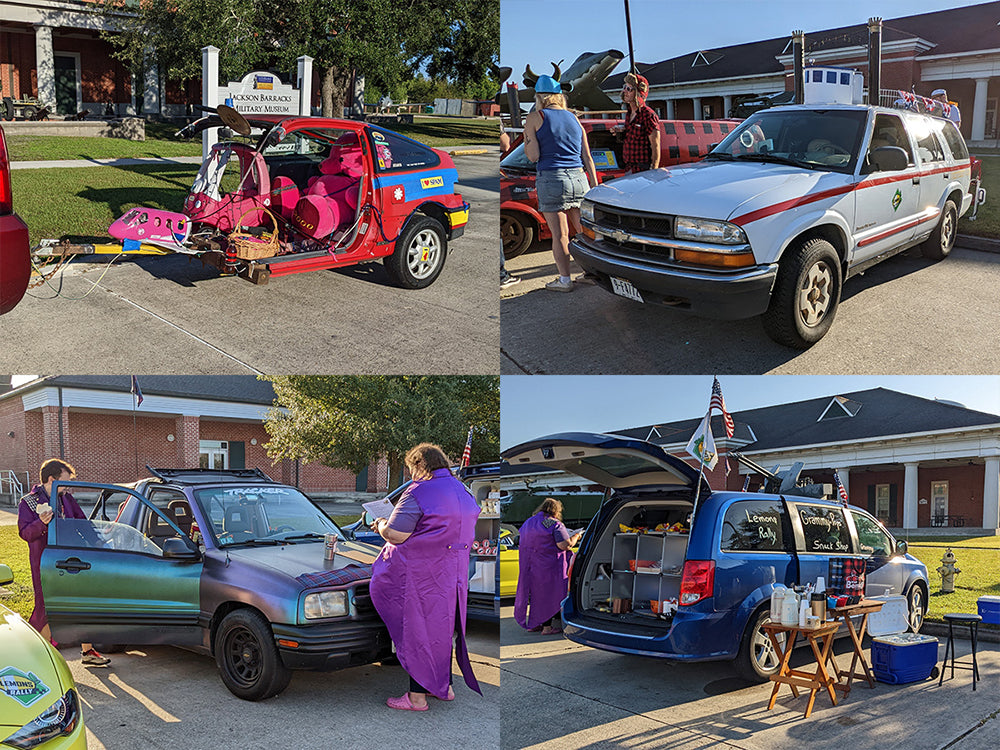
Above: some of the cars at the Great River Road Lemons Rally.
Day One’s route took us from New Orleans to Vicksburg, Mississippi. As with any other rally, the checkpoints were numerous (18 on our first day, with additional challenges), and covered a lot of the history along the Mississippi, including historical markers, geographical features, and even an allegedly haunted Presbyterian church, opened in 1832, located in a small ghost town along a series of dirt roads (in Lorman, Mississippi), which I visited at dusk.
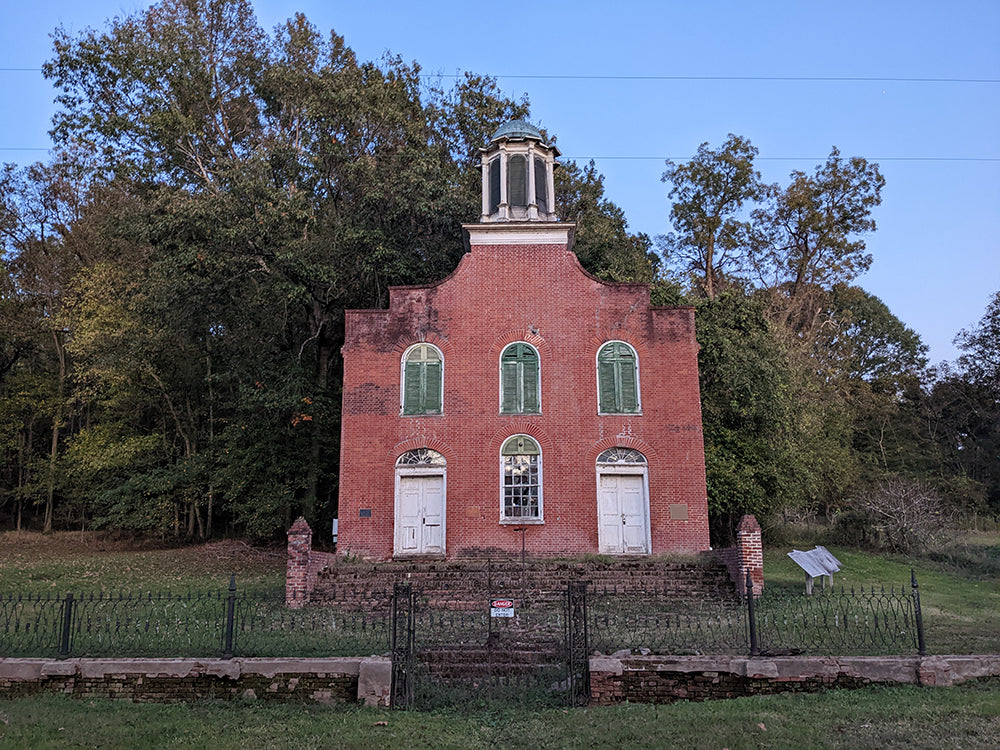
The supposedly haunted church.
Our first day also took us to the birthplace of blues legend Buddy Guy in Lettsworth, Louisiana…
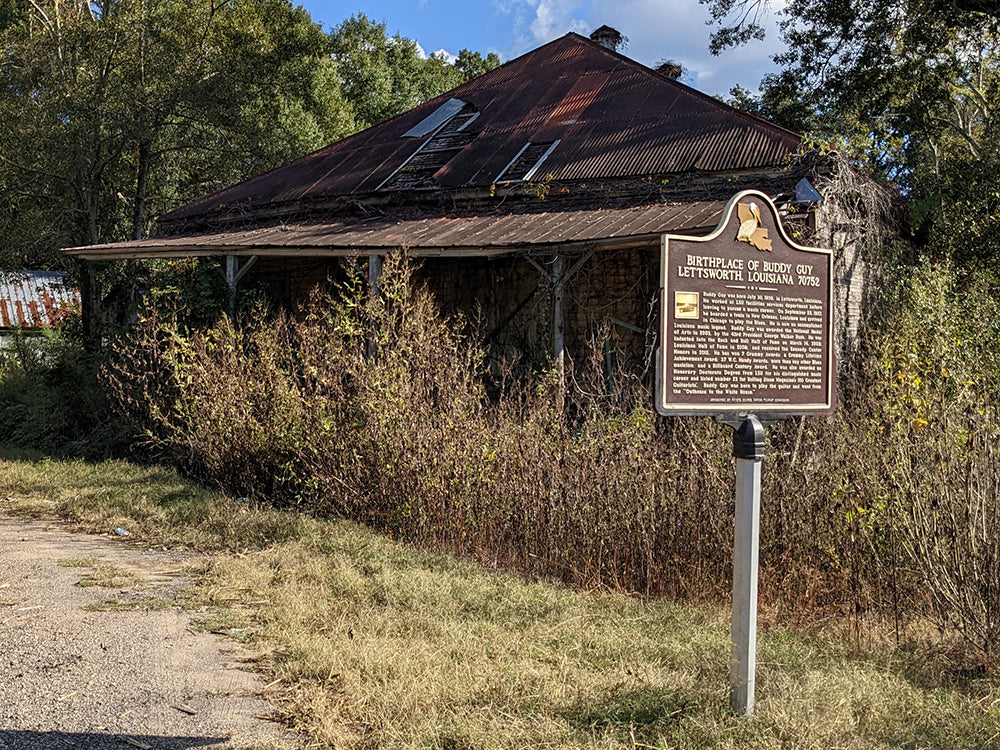
The birthplace of Buddy Guy.
…and a house of ill repute where Mark Twain allegedly spent some of his more enjoyable evenings – the Under-The-Hill Saloon in Natchez, Mississippi.
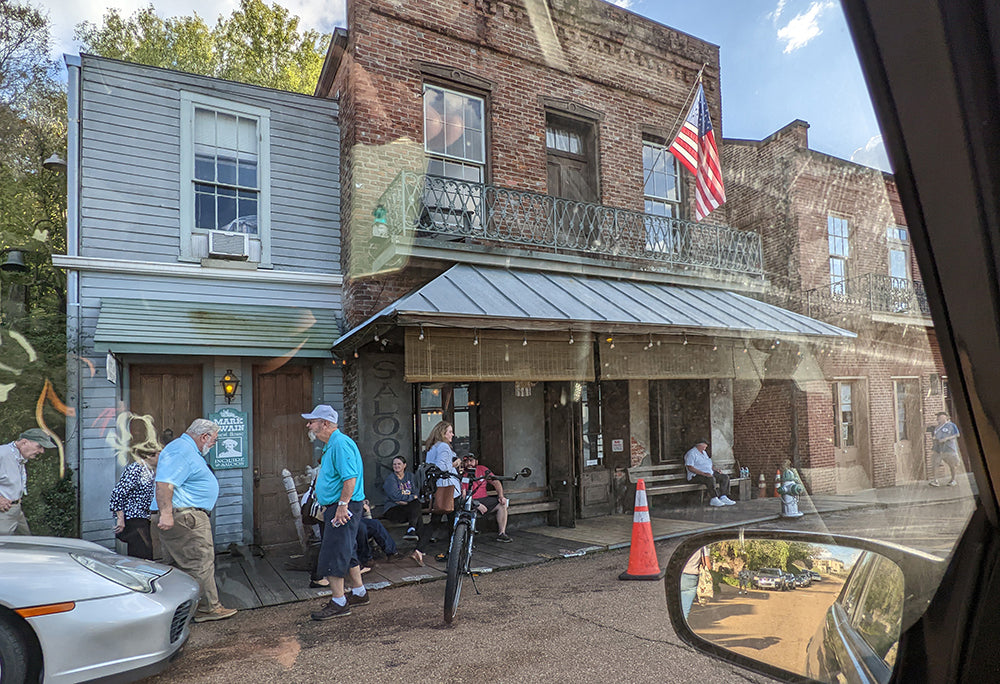
The Under-the-Hill Saloon.
And bridges. Lots and lots of bridges. As our rally covered both sides of the Mississippi, we crossed many bridges during the entire rally. One other thing we noticed through Louisiana and Mississippi was the damage left behind by Hurricane Ian. Some of the rural areas had evidence of downed tree limbs or entire trees. In some small towns, there were pockets of areas where roofs or siding were torn off. Despite what you’d think, we rarely saw the river during the first three rally days – the levee along the Mississippi stretches through a handful of states until you get further north.
How was the rebuilt hooptie doing? By the end of the day…very strange. After the trip to the haunted church along numerous dirt roads, there was an odd moaning noise coming from the rear of the car. I did not suspect any demons had transferred their spirits to the car, but I feared anything from brake or bearing issues to tire damage. At the hotel that evening, I grabbed the lightbar and found I’d picked up a little souvenir, courtesy of the dirt roads near Lorman, MS and the aforementioned downed tree limbs:
The twig was wedged in quite tightly (which is how it survived nearly 60 miles rubbing against the tire), and a few difficult yanks got it dislodged.
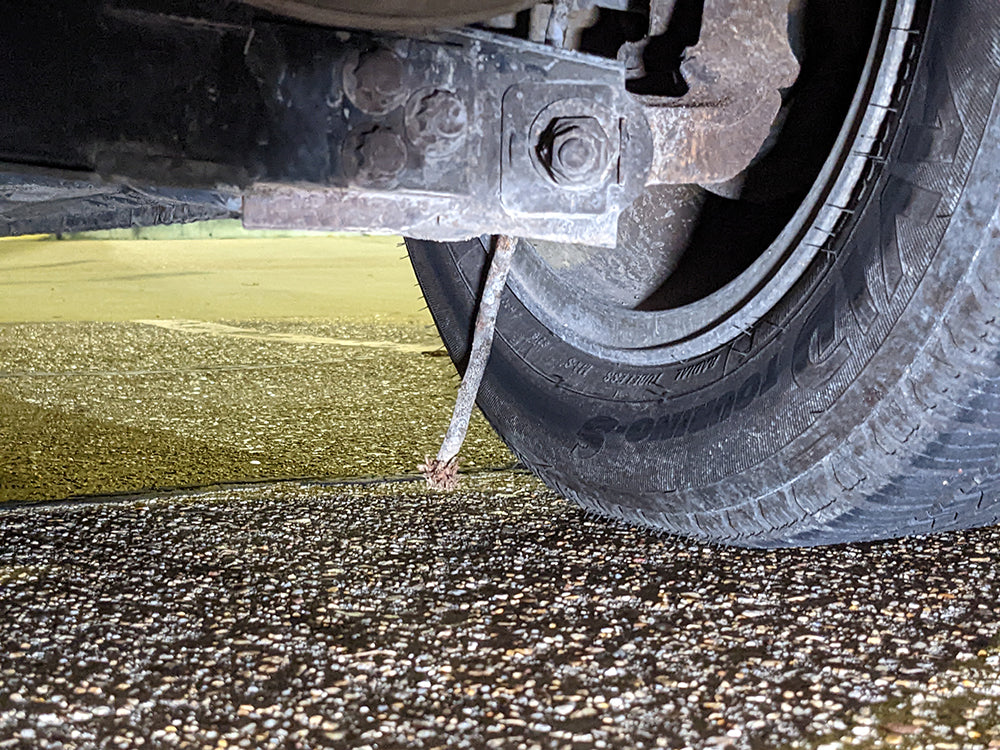
“Stop, hey, what’s that sound?”
On Day Two we entered the heart of cotton country. One of our checkpoints was a round barn (used for cotton storage) in Chatham, MS. We also located a Cold War jet on a pole (a Lockheed T-33 located at the Mid Delta Regional Airport in Greenville, MS), the Washington County Welcome Center (modeled after a steamboat), the origin of the teddy bear (a series of wooden bear carvings modeled after Teddy Roosevelt in Rolling Fork, MS), and the survey marker for the baselines for the Louisiana Purchase (pictured below). We also encountered a few musical landmarks including a historical marker in Friars Point, Mississippi honoring Conway Twitty, a visit to the Devil’s Crossroads in Clarksdale, MS, and a marker alongside the White Front Café in Rosedale, MS explaining how tamales became popular in that region, with mention made of Robert Johnson’s use of tamale imagery in his recording “They’re Red Hot.”
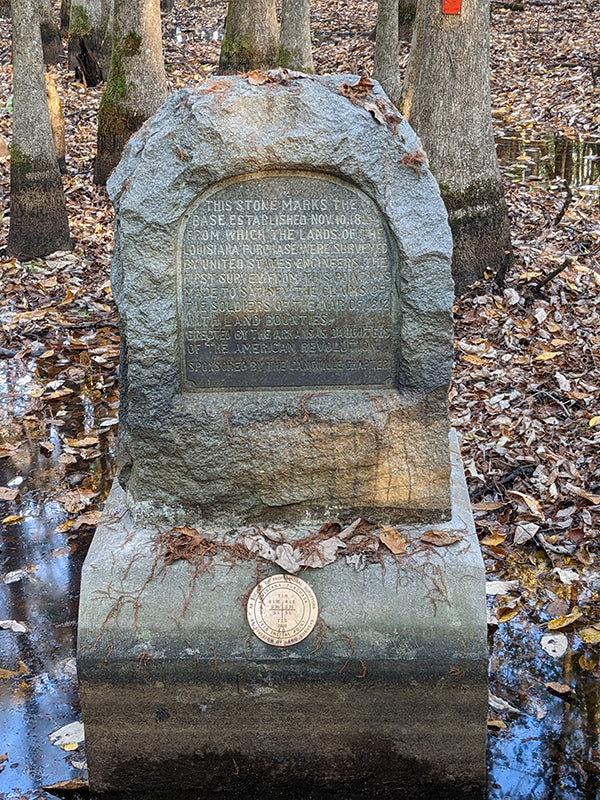
Survey marker for the baselines of the Louisiana Purchase.
As darkness fell, I arrived in Memphis with two checkpoints left to go, including a drive-by of Sun Studios, and a “Memphis pyramid” (which turned out to be the massive Bass Pro Shop/Big Cypress Lodge), both of which followed my stop at Central BBQ for dinner.
Day Three’s route directed us to another musical landmark – the childhood home of Johnny Cash.
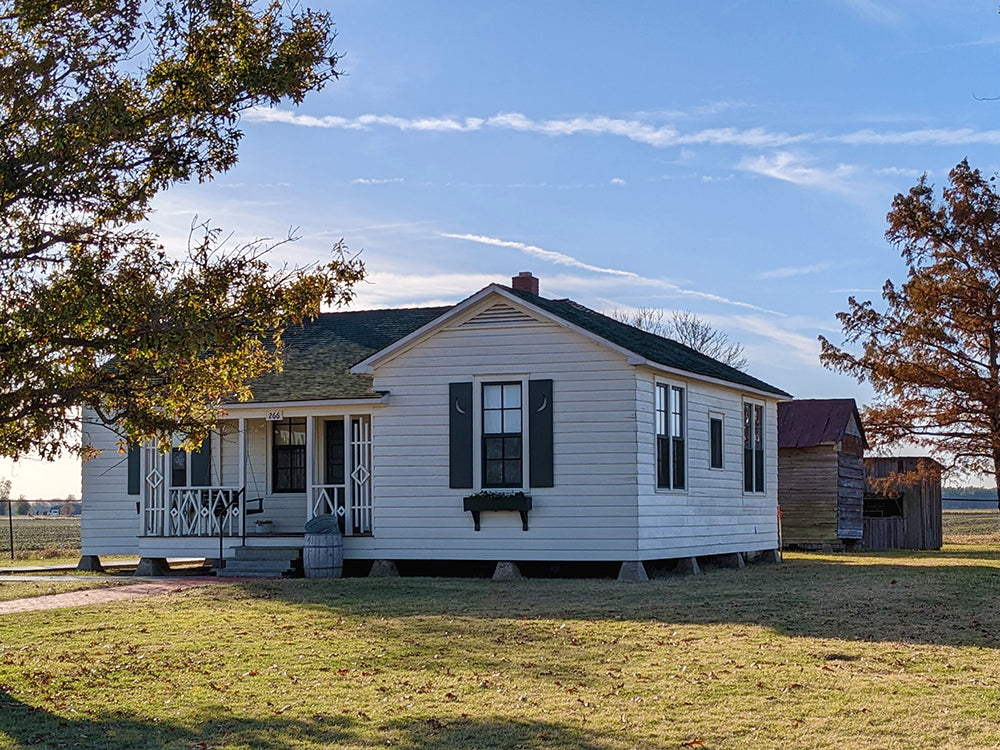
The childhood home of Johnny Cash.
Other highlights of the day include an art deco-themed Greyhound bus depot, the Riverlore Mansion in Cairo, IL, the Liberty Bell of the West and, upon arrival in St. Louis for the evening, the Das Bevo Windmill (a biergarten and banquet center), and the Gateway Arch.
Day Four marked a turning point. Not only would we see more of the Mississippi River, the weather would start to change. We had enjoyed temperatures in the 70s and 80s, but with the evening’s destination being Davenport, Iowa, the temps began to drop as we approached the Quad Cities, and it was downright cold the following morning. This fourth day, our checkpoints were fewer, with more scenic stops along the way. We had a few more historical markers to find, including one marking the location in Nebo, IL where the Vin Fiz landed (en route on the first transcontinental airplane flight), and another marking the Icarian community in Nauvoo, Illinois. The day ended with the crossing of the Government Bridge (also known as the Arsenal Bridge), a dual-deck swing bridge connecting Rock Island, IL to Davenport.
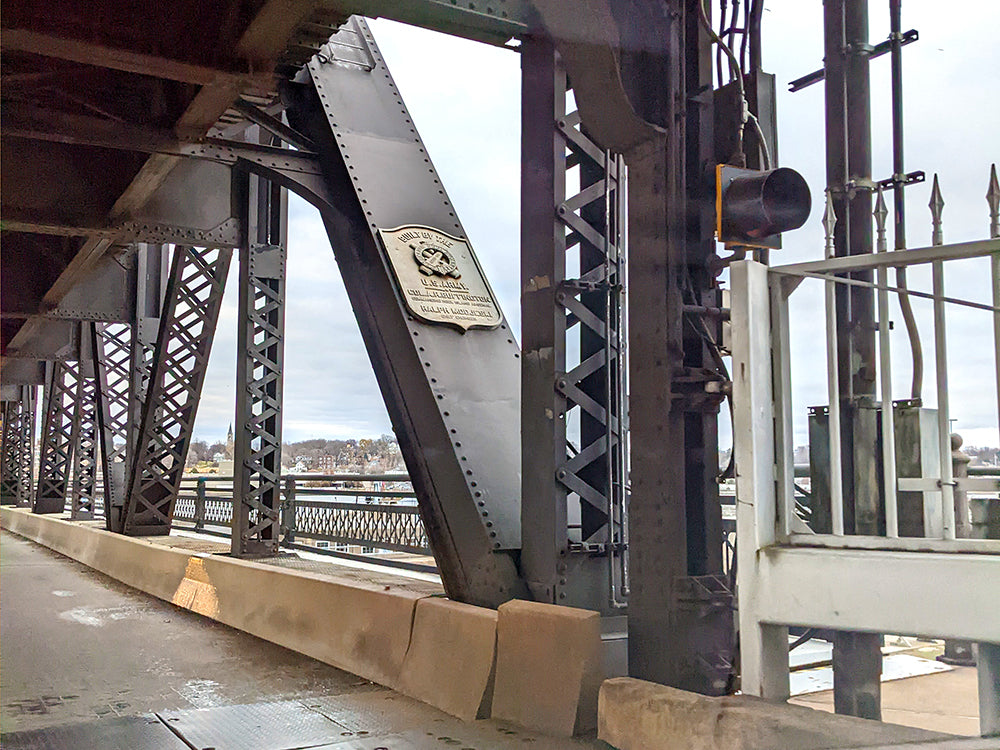
Government Bridge, Iowa.
Day Five started off chilly, with stops at the nearly abandoned Savanna Army Depot, Pink the Elephant outside the Lady Luck Casino in Marquette, IA, the World’s Largest Six-Pack in La Crosse, WI, and literally the inspiration for the entire rally, the Shot Tower in Dubuque, IA. (Rallymaster Jeff discovered the tower on a trip through the area, thought it was too cool not to miss, and built the Great River Road Lemons Rally around it.) Shot towers produced the lead shot used in rifles. Molten lead was poured through a grate at the top of the tower, and as the molten lead fell from the grate, the droplets formed into nearly perfect spheres, landing in water to solidify and retain the shape. The Dubuque Shot Tower is said to be one of two remaining in the United States.
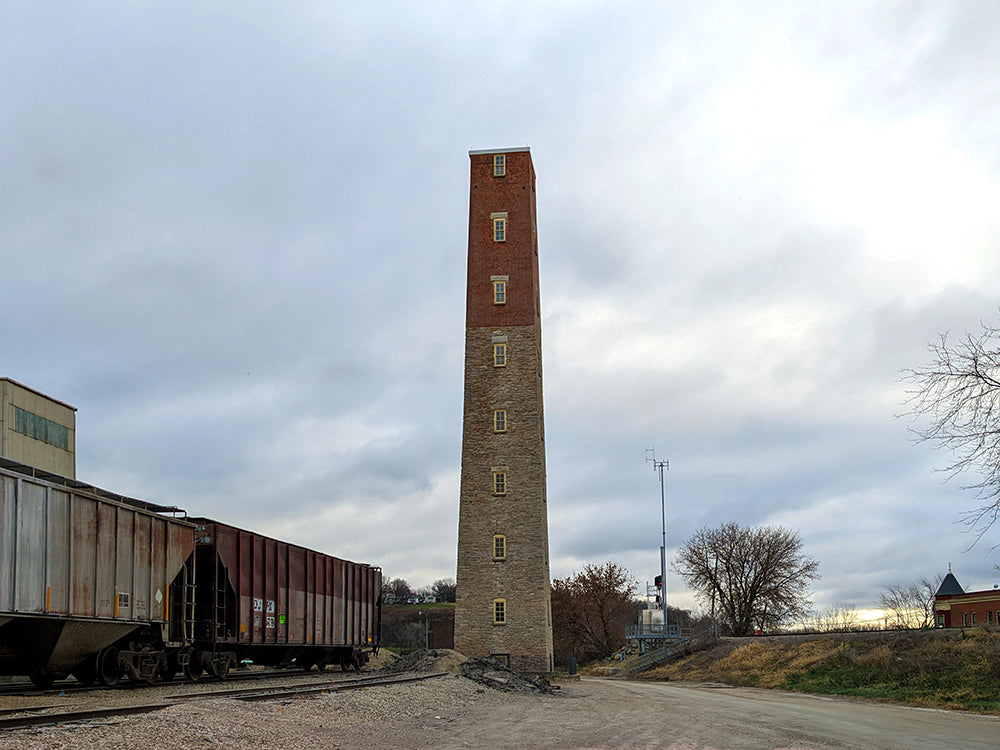
Dubuque Shot Tower, Iowa.
With this being the final day, we only had seven checkpoints. We also had to be at the rally’s finish line at 3:30 p.m., so it was a light load of mostly driving along the river. It was nice to have a light day and a chance to see the different areas along and around the river. The finish line and awards ceremony was held at the Minnesota Transportation Museum (built inside an old train roundhouse) in St. Paul, Minnesota.
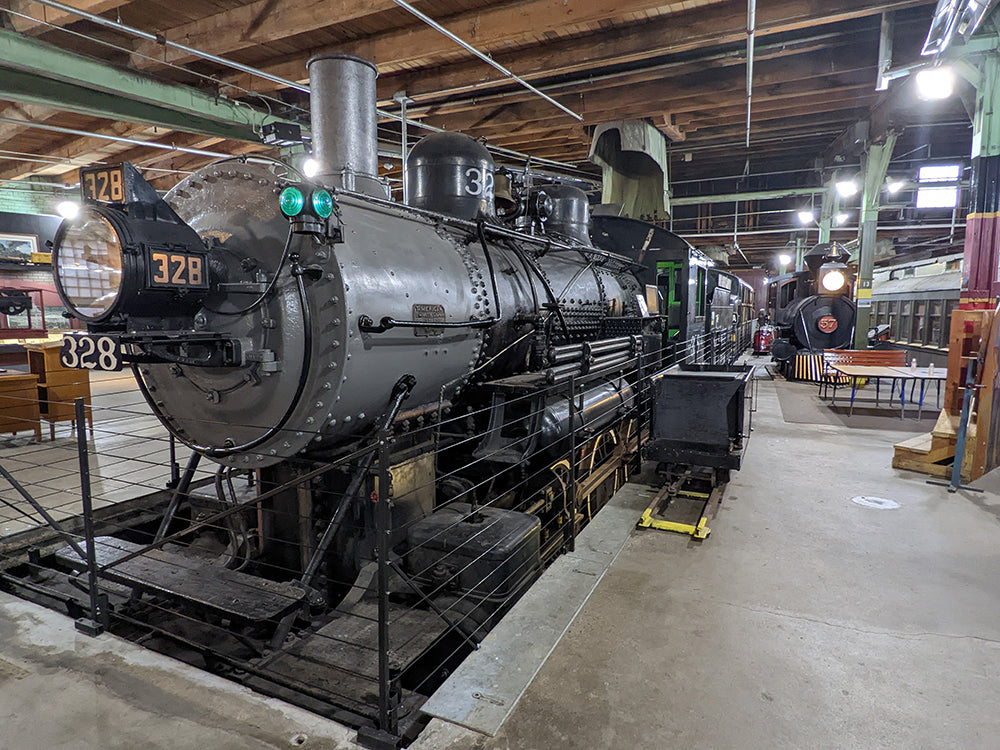
Inside the Minnesota Transportation Museum.
As expected, I won no awards, but the two rally organizers (Jeff and Eric) were discussing amongst themselves that it would be cool if I would find an ’80s Honda to bring on a rally, instead of the 2004 Civic I entered. We get more points the older and more unusual our cars are; repairs along the way also count for points, as does the “overall hooptieness” and theme of the car.
What really makes a Lemons Rally worthwhile are the fellow rally participants. Throughout a typical day, we will cross paths with various cars, making friends along the way. It was also good to see Jim again, after his rally win in April on the Rocky Mountain Breakdown (where he won in his 1953 MG TD). A couple of other teams from the Rust Belt Ramble made an appearance. And while they didn’t participate, two rally friends from Montana were vacationing in New Orleans and saw us off at the rally start. There’s also nothing more bonding than helping another team remove rally stickers from a rental car in sub-freezing weather, when said stickers were coming off in small, fragile shards due to the cold.
The drive home was uneventful, and I made it from Eau Claire, Wisconsin to Michigan City, Indiana non-stop before needing automotive and personal fuel. Early on a Sunday morning, I even blew through Chicagoland with nothing more than a three-minute delay due to a crash on the I-290 ramp to I-294. (Must I-80/I-94 through Indiana always be under construction?)
How did the car hold up? Very well! I averaged 33.9 miles per gallon, had a sporadic Check Engine light (for the downstream oxygen sensor, fouled from all the burned oil in the past), and picked up that twig. After 4,150 miles, the engine oil was only 1/8-inch (or less) off of the full mark. Problem solved!
My first rally next year will be the 2023 Rocky Mountain Breakdown, which starts in Casper, Wyoming and circles through Idaho Falls and a large swath of Montana. I have plenty of time to decide on which vehicle to take, and design more vinyl graphics to include this time around. The rallies give travelers like me the opportunity to see many things I would normally miss and roads I would normally avoid during my usual road trips.
All images courtesy of the author.













0 comments